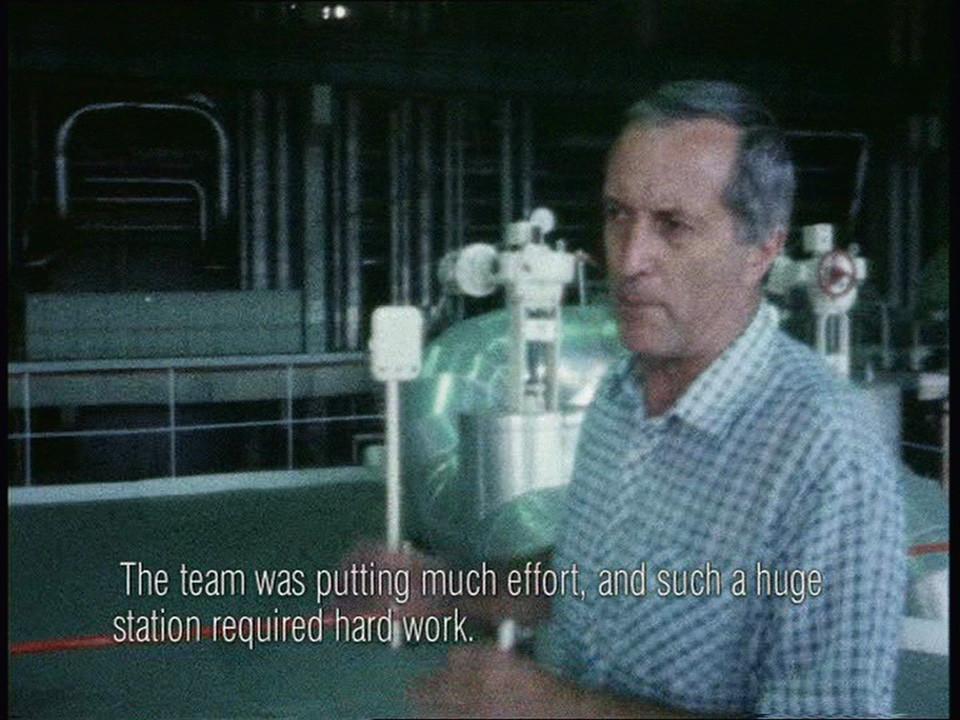Deimantas Narkevičius
Energy Lithuania
Deimantas Narkevičius
Energy Lithuania, 2004, video (Super 8 mm transferred to DVD), 17 min 27 sec
Collection II of the Arsenal Gallery in Białystok. Work purchased by the Podlaskie Association for the Promotion of Fine Arts

Deimantas Narkevičius focuses on history, and specifically on how societies manage the past and the past-affected contemporariness. The artist studies Soviet heritage, ever-present (in space material and mental alike) throughout Lithuania, a country independent since 1991.
The Energy Lithuania video was shot in Elektrėnai, a town built in the early 1960s as part of a project to industrialise Lithuania at a time when it had formed part of the Soviet Union. Elektrėnai was basically a residential area for the employees of the Elektrėnai Power Plant built in the years 1960–1972. Narkevičius shows the place’s history through the eyes of a private individual. The story is told by a power plant employee, an engineer recalling the construction of power blocks one after another, the moment of connecting the first houses and streets to the grid, the inflow of staff from all over the USSR. He talks of the optimism and enthusiasm of “modernity constructors”, and of their excitement at being part of the birth of a new reality. The camera records the power plant’s infrastructure, a Soviet housing estate, and private lives of locals outside of the plant: the Latin American dance classes, the joys of a bathing beach. Fatalities on the power plant construction site are mentioned, and the narrative is expanded to include long shots of a mural painted to commemorate the victims, with Wolfgang Amadeus Mozart’s Piano Sonata in F Major playing in the background.
Narkevičius deconstructs the utopia of socialism in technology, showing Elektrėnai in a state of suspension – the power plant, the beating heart of the town, has remained operational, but no longer at the place of glory originally outlined in Soviet visions of modernity. The past exists in contemporariness, memories of enthusiasm accompanying the process of building the future stay alive despite the town’s deterioration. The artist used Super 8 mm to make his movie, a tape once favoured by amateurs, well outdated at the time of shooting. The 8 mm’s unmistakable image quality and its bleak and melancholy colours have stripped the film of any documentary dimension, morphing it into a nostalgic flick, well-suited to an attempt at capturing the rather troubled status of Soviet heritage.
Izabela Kopania
translated from Polish by Aleksandra Sobczak

PLAN YOUR VISIT
Opening times:
Thuesday – Sunday
10:00-18:00
Last admission
to exhibition is at:
17.30